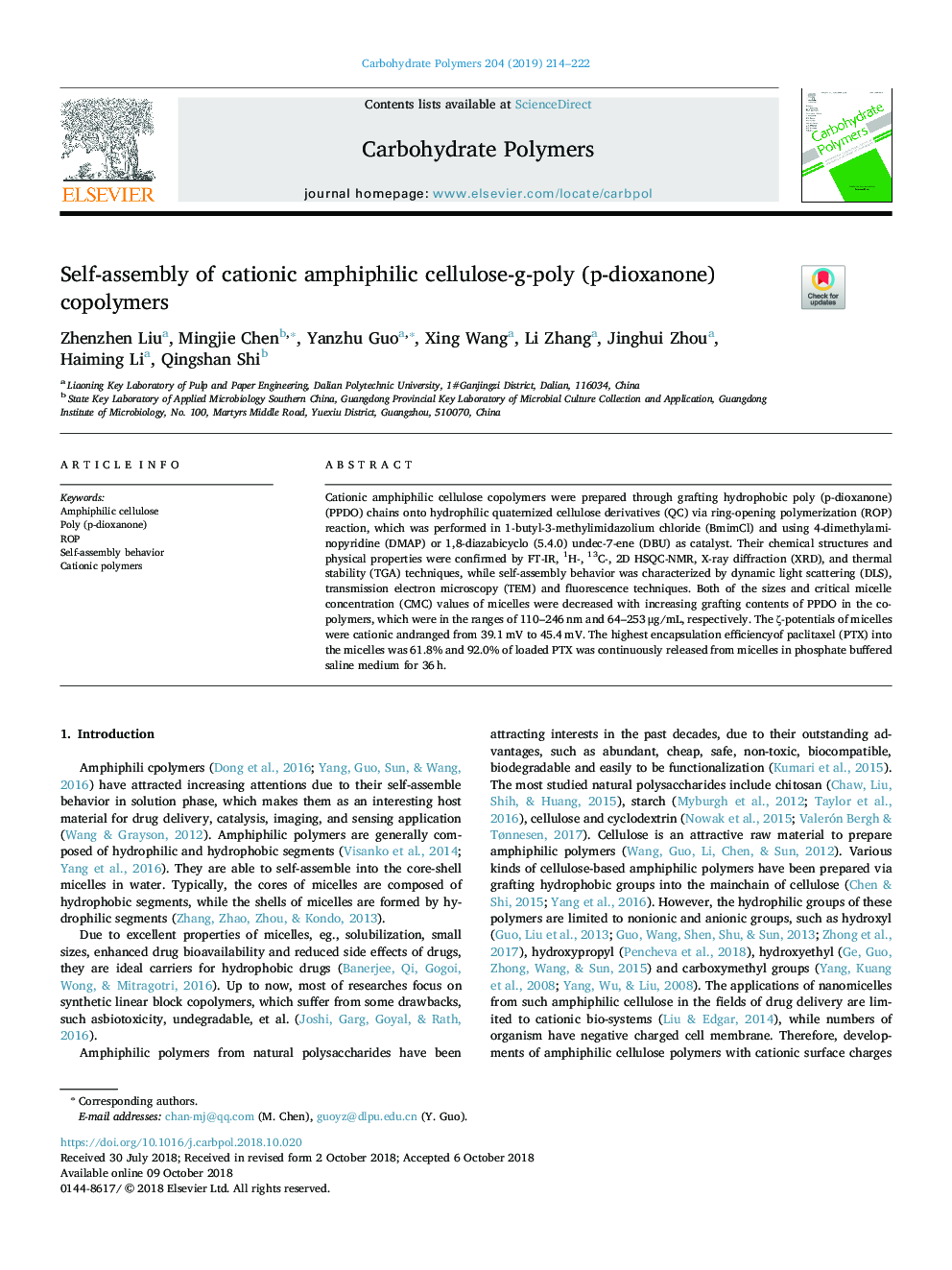| Article ID | Journal | Published Year | Pages | File Type |
|---|---|---|---|---|
| 11262963 | Carbohydrate Polymers | 2019 | 9 Pages |
Abstract
Cationic amphiphilic cellulose copolymers were prepared through grafting hydrophobic poly (p-dioxanone) (PPDO) chains onto hydrophilic quaternized cellulose derivatives (QC) via ring-opening polymerization (ROP) reaction, which was performed in 1-butyl-3-methylimidazolium chloride (BmimCl) and using 4-dimethylaminopyridine (DMAP) or 1,8-diazabicyclo (5.4.0) undec-7-ene (DBU) as catalyst. Their chemical structures and physical properties were confirmed by FT-IR, 1H-, 13C-, 2D HSQC-NMR, X-ray diffraction (XRD), and thermal stability (TGA) techniques, while self-assembly behavior was characterized by dynamic light scattering (DLS), transmission electron microscopy (TEM) and fluorescence techniques. Both of the sizes and critical micelle concentration (CMC) values of micelles were decreased with increasing grafting contents of PPDO in the copolymers, which were in the ranges of 110-246ânm and 64-253âμg/mL, respectively. The ζ-potentials of micelles were cationic andranged from 39.1âmV to 45.4âmV. The highest encapsulation efficiencyof paclitaxel (PTX) into the micelles was 61.8% and 92.0% of loaded PTX was continuously released from micelles in phosphate buffered saline medium for 36âh.
Related Topics
Physical Sciences and Engineering
Chemistry
Organic Chemistry
Authors
Zhenzhen Liu, Mingjie Chen, Yanzhu Guo, Xing Wang, Li Zhang, Jinghui Zhou, Haiming Li, Qingshan Shi,
